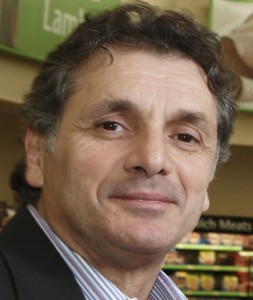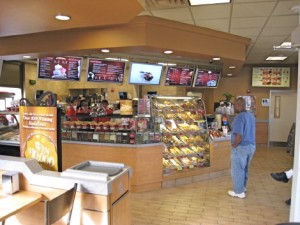Gail Chiasson, North American Editor
This weekend, we talked to Nick Prigioniero, the president and CEO of EK3, whom we haven’t had the pleasure of meeting face-to-face yet, but with whom we had a lengthy phone chat during his current business tour of several European centres.
 We were particularly curious about EK3’s work with Tim Hortons, with which it has worked since 2004, but in looking at the extensive list of clients of this company – incubated as a startup at the University of Western Ontario in 1998 – we were surprised at how large the company is with about 150 employees and how far-reaching is its work. The company has clients that operate in all 10 Canadian provinces and three territories; in 32 U.S. States, Ireland, England, Sweden, Spain, Denmark, Finland, Italy, Algeria and United Arab Emirates.
We were particularly curious about EK3’s work with Tim Hortons, with which it has worked since 2004, but in looking at the extensive list of clients of this company – incubated as a startup at the University of Western Ontario in 1998 – we were surprised at how large the company is with about 150 employees and how far-reaching is its work. The company has clients that operate in all 10 Canadian provinces and three territories; in 32 U.S. States, Ireland, England, Sweden, Spain, Denmark, Finland, Italy, Algeria and United Arab Emirates.
Since EK3’s head office is in London, Ontario, in Canada, with an office in Toronto, Prigioniero is considering opening a European office, so he is currently researching possible locales for same, while looking at some of his clients’ installations.
“The company was started by two engineering students interested in narrowcasting,” says Prigioniero. “The first client was actually the food court at the University of Western Ontario where EK3 put up displays and sold advertising on them.”
Campbell Soup was an advertiser who wanted advertising based on the weather, which got EK3 into narrowcasting. Today, EK3’s clients include many of the world’s biggest brands including, among many others, McDonald’s, Coca-Cola, Disney, Apple, Walmart, Procter & Gamble, McCain’s, and Tim Hortons.
“We don’t talk much about ourselves,” says Prigioniera, who joined the company in 2001. “We let our work speak for itself. Much of what we do is highly confidential, so unless the clients want us to talk, we just keep a low profile. But I honestly believe that we offer the most robust and scalable technology platform in the industry.”
EK3 has developed all its own software, working from its engineering roots at the University of Western Ontario where it now funds its own lab – which is turn helps it develop new strategies and technology for its clients. (Several unnamed clients are currently doing pilots tests of various developments.)
EK3 works with various partners and is hardware agnostic. It works mainly with LG Electronics for Tim Hortons, where it has been extending the coffee and bakery-items chain’s original single screens to five-panel menu boards across more than 3,000 Tim Hortons outlets in Canada, the US and Dubai.
 Tim Hortons is believed to be only the second large chain in North America to move to a fully digital menu board system, with its deployment coming on the heels of Burger King’s recently completed rollout of the technology to approximately 6,542 U.S. locations and its current effort to add similar displays in Canada. (Tim Hortons/EK3 is a finalist in DailyDOOH’s upcoming gala awards (Nov. 29, 2012) in the QSR/Bar or Restaurant Deployments category.)
Tim Hortons is believed to be only the second large chain in North America to move to a fully digital menu board system, with its deployment coming on the heels of Burger King’s recently completed rollout of the technology to approximately 6,542 U.S. locations and its current effort to add similar displays in Canada. (Tim Hortons/EK3 is a finalist in DailyDOOH’s upcoming gala awards (Nov. 29, 2012) in the QSR/Bar or Restaurant Deployments category.)
“Our technology allows us to use different strategies in different locations,” says Prigioniera. “For example, in Dubai where we now have deployments in 12 Tim Hortons, the strategy is different, but can vary with the technology. We can be extremely granular with our strategy.”
In Afghanistan, where Tim Hortons had a temporary outlet servicing the Canadian troops when they were deployed there (and which drew as many US and British troops as Canadian) the screens’ messaging also involved education.
Tim Hortons, which also has been installing WiFi in all its outlets as well, is very community minded, strongly supporting Timbits Soccer and Timbits Hockey and other community events.
“We work with Tim Hortons in promoting these means of its giving back to their communities,” says Prigioniero. “Our technology allows us to localize a store and localize the community. It offers tremendous potential, and we’re not even scratching the surface.”
Tim Hortons Advertising and Promotion Fund (Canada) Inc. has been funding the expansion of the menu boards across the chain.

Follow DailyDOOH